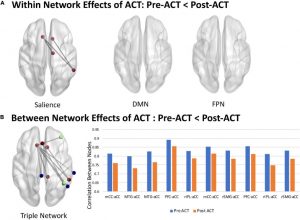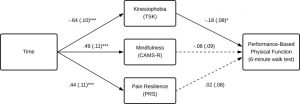Have Better Sex with Mindfulness
By John M. de Castro, Ph.D.
“Mindful sex involves being able to observe and describe what’s happening inside your body and mind without sorting experiences into “bad” and “good” or trying to change your feelings. When we are able to do that, we can “turn off the autopilot.” – Gina Silverstein
Sex is a very important aspect of life. Problems with sex are very common and have negative consequences for relationships. While research suggests that sexual dysfunction is common, it is a topic that many people are hesitant or embarrassed to discuss. Women suffer from sexual dysfunction more than men with 43% of women and 31% of men reporting some degree of difficulty. Hence, sex has major impacts on people’s lives and relationships. Greater research attention to sexual activity and sexual satisfaction and the well-being of the individual is warranted.
Mindfulness trainings have been shown to improve a variety of psychological issues including emotion regulation, stress responses, trauma, fear and worry, anxiety, and depression, and self-esteem. Mindfulness training has also been found to improve relationships and to be useful in treating sexual problems. But there is little empirical research on the relationship of mindfulness with sexuality in normal, non-clinical, individuals.
In today’s Research News article “Mindfulness in Sexual Activity, Sexual Satisfaction and Erotic Fantasies in a Non-Clinical Sample.” (See summary below or view the full text of the study at: https://www.ncbi.nlm.nih.gov/pmc/articles/PMC7908537/ ) Sánchez-Sánchez and colleagues recruited online adults who were meditation naïve or who practiced meditation for at least 5 months. They completed measures online of mindfulness, body awareness, sexual satisfaction, sexual activity, and sexual fantasies.
They found that the meditation practitioners were significantly higher in emotion regulation, family, academics, relationships, sociability, attention, health, sexuality, and leisure and significantly lower in perceived stress. They were also significantly higher in mindfulness, body awareness, sexual satisfaction, sexual activity, and sexual fantasies. They also found that the higher the levels of mindfulness and the amount of mindfulness practice, the higher the levels of body awareness sexual satisfaction and sexual activity. Also, they found that the higher the levels of mindfulness the lower the levels of body dissociation.
It should be kept in mind that there was no random assignment and so the groups may be quite different, People who meditate may be systematically different from those who don’t in many ways including the variables measured in this study. But previous research including randomized studies demonstrated that mindfulness produced higher levels of emotion regulation, family, academics, relationships, sociability, attention, health, and sexuality, and lower levels of stress. So, the present findings likely also represent causal connections.
These findings suggest that mindfulness is associated with better psychological and physical health and well-being. They also suggest that mindfulness is associated with better sexual function in terms of sexual activity, satisfaction with sex, and relationship quality and even a better sexual fantasy life. Sex is such an important aspect of life that many of the other psychological and physical benefits of mindfulness may emanate from the improved sex life of the individuals. Much more research is needed.
So, have better sex with mindfulness.
“Think of mindful sex as an invitation, as an opportunity to explore the mystery of sex. The reward is deeper intimacy, more meaningful connections, and (fingers crossed) greater physical pleasure.” – Kayti Christian
CMCS – Center for Mindfulness and Contemplative Studies
This and other Contemplative Studies posts are also available on Google+ https://plus.google.com/106784388191201299496/posts and on Twitter @MindfulResearch
Study Summary
Sánchez-Sánchez, L. C., Rodríguez, M., García-Montes, J. M., Petisco-Rodríguez, C., & Fernández-García, R. (2021). Mindfulness in Sexual Activity, Sexual Satisfaction and Erotic Fantasies in a Non-Clinical Sample. International journal of environmental research and public health, 18(3), 1161. https://doi.org/10.3390/ijerph18031161
Abstract
The goal of this study is to better understand the relation between the practice of Mindfulness and the sexual activity, sexual satisfaction and erotic fantasies of Spanish-speaking participants. This research focuses on the comparison between people who practice Mindfulness versus naïve people, and explores the practice of Mindfulness and its relation with the following variables about sexuality: body awareness and bodily dissociation, personal sexual satisfaction, partner and relationship-related satisfaction, desire, subjective sexual arousal, genital arousal, orgasm, pain, attitudes towards sexual fantasies and types of sexual fantasies. The sample consisted of 106 selected adults, 32 men and 74 women, who completed six measures on an online survey platform: (a) Mindfulness Attention Awareness Scale (MAAS), (b) Scale of Body Connection (SBC), (c) New Sexual Satisfaction Scale (NSSS), (d) Scale of Sexual Activity in Women (SSA-W) and Men (SSA-M), (e) Hurlbert Index of Sexual Fantasy (HISF), (f) Wilson’s Sex Fantasy Questionnaire. In the MAAS, Body Awareness subscale (SBC), NSSS, SSA-W and SSA-M, HISF and intimate fantasies subscale (Wilson’s questionnaire), people in the Mindfulness condition showed higher scores and these differences were statistically significant. These results may have relevant implications in the sexuality of clinical and non-clinical samples.
https://www.ncbi.nlm.nih.gov/pmc/articles/PMC7908537/









